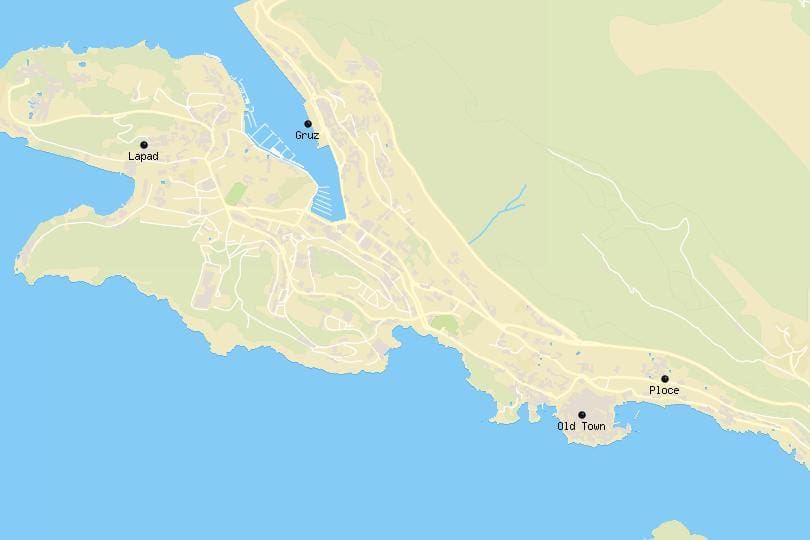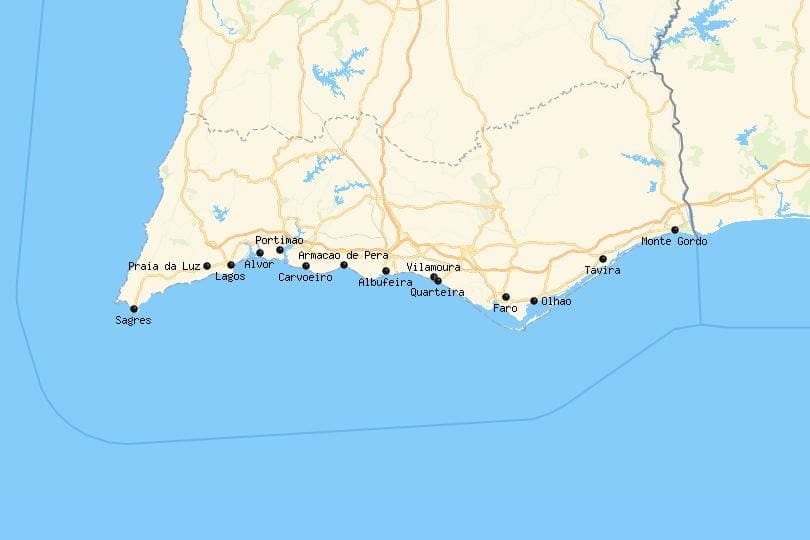Venezuela, nestled in the northern part of South America, is a country of stunning contrasts—from snow-capped mountains and lush rainforests to pristine beaches and vast savannahs. Despite recent challenges, the country continues to boast a wealth of natural and cultural landmarks that make it an extraordinary destination for adventurous travelers. If you’re considering visiting Venezuela, you won’t want to miss its top attractions, which offer unique experiences for nature lovers, history enthusiasts, and thrill-seekters alike. Here’s an expanded and detailed look at the 10 top tourist attractions in Venezuela that you must see on your journey.
1. Angel Falls (Salto Ángel)
Angel Falls, the world’s tallest uninterrupted waterfall, is located deep within Canaima National Park in Venezuela’s Gran Sabana region. With a staggering height of 979 meters (3,212 feet), Angel Falls plunges dramatically over the side of the Auyán Tepui—a flat-topped mountain. The waterfall’s remote location within the park makes it accessible only by a combination of air travel and riverboat rides, adding to the sense of adventure and the natural beauty of the surroundings.
The journey to Angel Falls is as breathtaking as the destination itself. Visitors take a flight to Canaima village, followed by a boat ride along the Carrao River, navigating through rapids and past towering cliffs. Afterward, a hike through the dense rainforest leads travelers to a viewpoint where they can marvel at the cascading waters.
The falls are an absolute must-visit, offering an unparalleled experience for nature lovers and photographers alike. The surrounding park also offers opportunities for camping, wildlife watching, and exploring the fascinating tepuis (tabletop mountains) that dot the landscape.
2. Canaima National Park
Canaima National Park, a UNESCO World Heritage Site, is a vast and diverse park that spans over 30,000 square kilometers of Venezuela’s Gran Sabana region. Established in 1962, this park is known for its surreal landscapes, which include the famous tepuis—ancient, flat-topped mountains that rise abruptly from the surrounding rainforest. These tepuis, some of which date back millions of years, have inspired myths and legends, with Roraima being the inspiration for Sir Arthur Conan Doyle’s The Lost World.
Aside from Angel Falls, Canaima National Park is also home to numerous other waterfalls, rivers, and lagoons, as well as diverse wildlife, including monkeys, jaguars, and over 300 species of birds. Visitors to Canaima can embark on boat trips through the park’s many rivers, hike through rainforests, or explore the unique ecosystems that make this area one of the most biodiverse in the world.
The park offers numerous eco-lodges, camping sites, and guided tours, making it an excellent destination for adventure enthusiasts and eco-tourists looking for a deeper connection with nature.
3. Morrocoy National Park
Morrocoy National Park, located along Venezuela’s northwestern coast, is one of the country’s most beautiful marine and coastal reserves. With over 30 islands and cays, the park offers stunning beaches, crystal-clear waters, and vibrant coral reefs. It is the perfect destination for those seeking a relaxing beach getaway, as well as those interested in water sports like snorkeling, diving, and kayaking.
The park is home to a wide variety of marine life, including sea turtles, dolphins, and a myriad of fish species, making it a paradise for divers and underwater enthusiasts. Some of the best-known islands in the park include Cayo de los Juanes, Cayo Sal, and Cayo Los Organos, all of which offer pristine, unspoiled beaches and clear turquoise waters.
Morrocoy National Park is easily accessible from the city of Valencia, making it a perfect weekend getaway for both locals and international travelers alike.
4. Mérida and the Mérida Andes
Located in the western part of Venezuela, Mérida is the capital of Mérida State and serves as a gateway to the Andes Mountains. The city itself is a charming colonial town surrounded by majestic peaks, lush valleys, and sprawling forests. It is one of Venezuela’s top destinations for hiking, trekking, and mountaineering, offering everything from easy scenic walks to challenging multi-day expeditions.
One of Mérida’s most famous attractions is the Mérida cable car (Teleférico de Mérida), the longest and highest cable car system in the world. The cable car takes visitors from the city center up to Pico Espejo, located at an altitude of over 4,700 meters (15,420 feet). From here, visitors are treated to panoramic views of the city below, the surrounding peaks, and valleys.
For those interested in exploring beyond Mérida, the surrounding mountains offer a network of trekking routes that lead to remote villages and breathtaking viewpoints. Some of the best hiking trails lead to Pico Bolívar, the highest peak in Venezuela, as well as Los Nevados, a stunning glacial landscape.
5. Los Roques Archipelago
Located in the Caribbean Sea, Los Roques Archipelago is a protected national park that is made up of more than 300 islands and cays. The archipelago is renowned for its stunning beaches, clear waters, and diverse marine life. It’s one of the most popular destinations for travelers looking to enjoy water activities like snorkeling, kite surfing, and scuba diving.
The islands offer white sand beaches, crystal-clear lagoons, and vibrant coral reefs that are home to a rich array of fish, sea turtles, and other marine creatures. The archipelago also boasts several eco-friendly resorts that allow travelers to experience the region’s natural beauty without disturbing its delicate ecosystem.
Los Roques is also an excellent destination for sailing and fishing, and visitors can explore the many secluded beaches or take a boat trip to remote islands. With its idyllic scenery and excellent facilities, Los Roques is perfect for both luxury travelers and adventure enthusiasts.
6. Roraima Tepui
Roraima Tepui is perhaps one of Venezuela’s most captivating natural wonders. It’s a vast and flat-topped mountain located in the Gran Sabana region of Venezuela. Standing at nearly 2,810 meters (9,219 feet), Roraima has inspired a variety of myths and stories, including Sir Arthur Conan Doyle’s The Lost World. Its unique geology, rare plants, and unusual ecosystems make it a must-see for trekkers and nature lovers.
A trek to the summit of Roraima typically takes six to ten days, depending on the route and pace, and it requires a high level of fitness and stamina. However, for those who take the journey, the reward is immense—a surreal landscape with stunning views, unique rock formations, and pristine ecosystems that are home to species found nowhere else on Earth. A Roraima expedition is truly one of Venezuela’s most remarkable adventures.
7. Caracas: The Capital City
As Venezuela’s capital, Caracas is a vibrant city that boasts an eclectic mix of modern and colonial architecture, cultural sites, and green spaces. Although Caracas faces challenges, the city is home to several important landmarks and attractions. Notable sites include the Panteón Nacional, where national heroes like Simón Bolívar are buried, and the Museo de Bellas Artes, which houses an impressive collection of Venezuelan and international art.
For panoramic views of the city, visitors can take the teleférico (cable car) up to El Ávila National Park, a vast natural reserve that offers hiking trails, wildlife, and breathtaking vistas of Caracas and the Caribbean Sea.
8. Cayo de Los Organos
Located in Vargas State, Cayo de Los Organos is a small island that is known for its stunning beaches and tranquil atmosphere. The island is perfect for those looking to escape the crowds and enjoy a relaxing time in nature. It is especially popular among eco-tourists and those interested in wildlife, as the surrounding waters are home to diverse marine life, including colorful coral reefs and fish species.
The island also offers excellent opportunities for water sports, including snorkeling, kayaking, and paddleboarding. For those who prefer a more laid-back experience, Cayo de Los Organos offers pristine beaches where visitors can relax, swim, or enjoy a picnic while taking in the beautiful surroundings.
9. The Llanos (Venezuelan Plains)
The Llanos is an extensive, flat region of plains that stretches across central Venezuela. Known for its rich biodiversity, this area is a haven for wildlife lovers and photographers. The plains are home to a variety of species, including capybaras, jaguars, anacondas, and more than 300 bird species. The region is best explored via guided safaris, which provide opportunities to spot wildlife in their natural habitats, especially during the wet season when the plains come alive with activity.
The Llanos is also known for its traditional cowboy culture, and visitors can experience the way of life through visits to local ranches and interactions with the llaneros, the cowboys of the region.
10. Mérida’s Pico Bolívar
For mountaineers and adventure seekers, Pico Bolívar offers a thrilling challenge. As the highest peak in Venezuela, reaching an altitude of 4,978 meters (16,335 feet), this mountain offers stunning views of the surrounding Andes Mountains and the Mérida Valley. Climbing Pico Bolívar requires technical mountaineering skills, and only experienced climbers should attempt the summit.
For those who prefer a less strenuous activity, the surrounding Pico Espejo area offers scenic hiking trails, alpine meadows, and pristine lakes.
Conclusion
From towering waterfalls to tropical beaches, dense rainforests to remote mountain peaks, Venezuela offers an incredible variety of attractions that cater to every type of traveler. The country’s unique landscapes, rich biodiversity, and welcoming culture make it a standout destination in South America. Whether you’re exploring Angel Falls, trekking up Roraima Tepui, or relaxing on the beaches of Morrocoy, Venezuela’s attractions are sure to leave a lasting impression.
FAQs
1. What are the top tourist attractions in Venezuela?
Some of the top tourist attractions in Venezuela include Angel Falls, Canaima National Park, Morrocoy National Park, Los Roques Archipelago, and Roraima Tepui.
2. How can I visit Angel Falls in Venezuela?
Angel Falls is located deep within Canaima National Park. To visit, you will typically fly to Canaima village and take a boat ride along the Carrao River followed by a hike through the jungle to reach the falls.
3. What is the best time to visit Venezuela?
The best time to visit Venezuela is during the dry season, which typically runs from December to April. This is when most of the country’s natural attractions are most accessible.
4. What are the best beaches to visit in Venezuela?
Some of the best beaches in Venezuela include Morrocoy National Park, Los Roques Archipelago, and Cayo de Los Organos.
5. How can I explore the Andes Mountains in Venezuela?
You can explore the Andes Mountains in Mérida by taking the Mérida cable car, hiking to Pico Bolívar, or exploring the surrounding national parks like Pico Espejo.
6. What wildlife can I see in Venezuela’s Llanos region?
The Llanos region is rich in wildlife, and visitors can see animals like capybaras, jaguars, anacondas, and numerous bird species.










